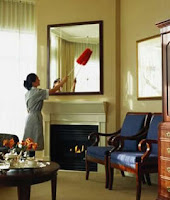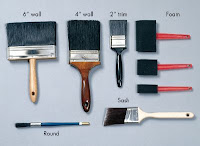Why Is It Smart To Hire A Maid Service?
In our time and need of help around the home, we've turned to the growing industry of Maid Services. They provide us with all the needed aid and support we need to make our lives much easier with their cleaning services to turn our homes into clean havens once more. In San Diego North County, we turn to these maids for help because we hardly have time of our own to handle our household while we are away from the home, being breadwinners for our families. What are the benefits maid services offer us as people too busy to be home to cater to the weeklong mess we probably left behind are these simple services that give us a piece of mind:
The main benefit these maids in North County give us is a cleaner home. They go through our household with the latest in cleaning equipment as well as the safest cleaning agents (being eco-friendly products) that don't leave behind strong chemical antiseptic smells after being applied, these chemicals are also safer for our children and pets since most conventional cleaning products such as Sodium Hydrochloride is trans-dermal- meaning they can enter the body through the skin and swim in the bloodstream, causing poisoning. The power of Maid Services' cleaning equipment also gives your house a more guaranteed cleanliness since they can eliminate nasty stains no ordinary carpet scrubbing or washing can handle. The maids in San Diego North County are trained professionals in the cleaning methods and procedures it takes to turn our homes into sparkling abodes devoid of dirt, they vacuum our floors with special vacuum cleaners that suck up any dirt from carpets, the also clean our windows; both inside and out as well as organize our house in such ways as folding our clothes, laundering our messy clothing, changing our bed sheets, etc. - It's practically full service.
The other benefits that maid services provide are their timing and availability. On the days we cannot clean our homes, they are always ready. Should it be a weekend or hectic weekday, Maid Services are available to us at anytime during the day and night. It's the whole point of being a maid service, to always be ready to serve. They provide us service packages that can vary in prices but with every package set up to have those above our budget range and those right on it- making it convenient for us to choose which one we want or could afford. There are additional services Maid Services provide as well like Pet Grooming and Cooking that goes beyond their normal cleaning service, these are always available to us at any time. Time is of no problem when it comes to calling on Maid Services.
The maids in San Diego North County also provide a function to us that are not quite obvious until you've understood the mechanics of how burglary works, putting their use and timing of maid service at such a crucial moment of safety for your home. Burglars often stalk and "case" the places they wish to hit and they do this by watching our homes for long periods could be weeks and take down noted patterns out neighborhood has to set up the right time to strike our homes. With Maid Services, we can ruin their careful planning and even discourage them to try as we can call in the maids in San Diego North County to clean our homes while we aren't in it, making it a perfect time to clean the house while any burglars plan to break-in is thwarted by the presence of the maids. Though not directly in aid to our home protection, Maid Services still affect the possible outcome if we did not call on them.
All these benefits are part of what we get when we hire a maid service to our advantage. The costs and effect of calling on one seemingly outweighs the doubts we have of availing the maids in San Diego North County help any time we need them.
Live In Maids For Hire – Making The Smart Choice
Live in maids for hire are common these days; however, before you decide on getting maid services, you have to understand many things first. You must be aware that the maid you hire is not a member of your family, and so it is of utmost importance that you choose carefully the one you will entrust your home to. Since the whole family will benefit from maid services, getting a maid should be a family decision.
Why should you hire maid services to begin with? There can be plenty of reasons like you need someone to care for your parent, to tend to your children, or to keep the house in order while you are at work. Whatever your reasons may be, you cannot deny the value of maid services.
Since you will be entrusting your home and your family to a stranger in this case, you need to be very cautious when looking for a maid. There are reliable agencies that deal with live-in maid services that you can approach. As much as possible, be specific with your requirements. Verify references and make sure that the maid has gone through proper profile or background checks.
You can have plenty of choices of live in maids for hire, but you can narrow them down based on your own feelings towards the maid, the skills you want your maid to be equipped with, her civil status and age.
Aside from these, you may prefer your maid to have a good experience with her previous employers or vice versa. She should be someone who can strictly adhere to the rules you set, and be always prepared to exhaust her skills and knowledge if needed. Before getting maid services, see to it that the salary, benefits, as well as bonuses and vacation leave credits are discussed well with the agency.
It certainly is no joke to get the services of a maid. So when looking for live in maids for hire, do a thorough research first and consider all possible options. This should guarantee that you will be taking in someone you can rely a hundred percent.
For more information, please visit our website:
http://www.dutchtouchmaids.com/






































